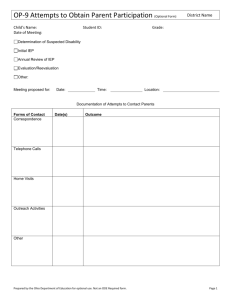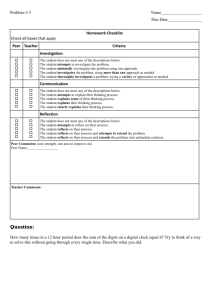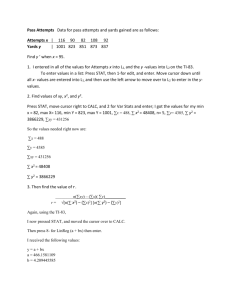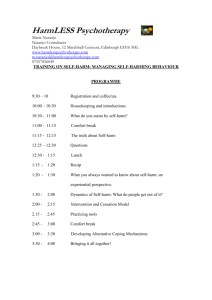Supplementary data - Springer Static Content Server
advertisement
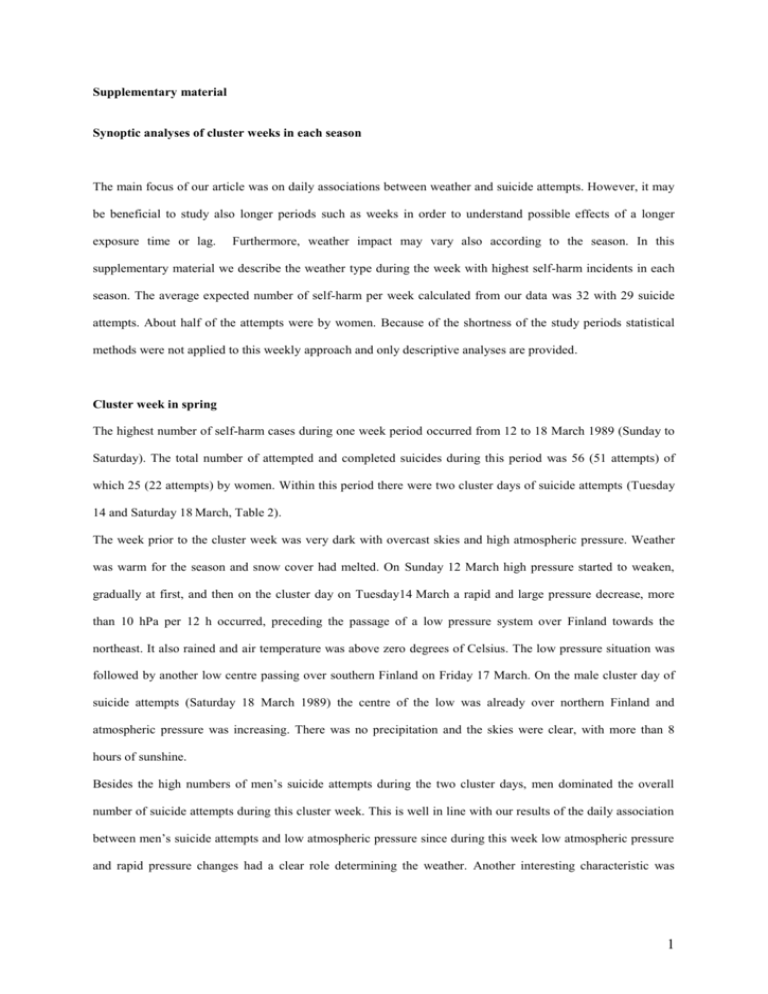
Supplementary material Synoptic analyses of cluster weeks in each season The main focus of our article was on daily associations between weather and suicide attempts. However, it may be beneficial to study also longer periods such as weeks in order to understand possible effects of a longer exposure time or lag. Furthermore, weather impact may vary also according to the season. In this supplementary material we describe the weather type during the week with highest self-harm incidents in each season. The average expected number of self-harm per week calculated from our data was 32 with 29 suicide attempts. About half of the attempts were by women. Because of the shortness of the study periods statistical methods were not applied to this weekly approach and only descriptive analyses are provided. Cluster week in spring The highest number of self-harm cases during one week period occurred from 12 to 18 March 1989 (Sunday to Saturday). The total number of attempted and completed suicides during this period was 56 (51 attempts) of which 25 (22 attempts) by women. Within this period there were two cluster days of suicide attempts (Tuesday 14 and Saturday 18 March, Table 2). The week prior to the cluster week was very dark with overcast skies and high atmospheric pressure. Weather was warm for the season and snow cover had melted. On Sunday 12 March high pressure started to weaken, gradually at first, and then on the cluster day on Tuesday14 March a rapid and large pressure decrease, more than 10 hPa per 12 h occurred, preceding the passage of a low pressure system over Finland towards the northeast. It also rained and air temperature was above zero degrees of Celsius. The low pressure situation was followed by another low centre passing over southern Finland on Friday 17 March. On the male cluster day of suicide attempts (Saturday 18 March 1989) the centre of the low was already over northern Finland and atmospheric pressure was increasing. There was no precipitation and the skies were clear, with more than 8 hours of sunshine. Besides the high numbers of men’s suicide attempts during the two cluster days, men dominated the overall number of suicide attempts during this cluster week. This is well in line with our results of the daily association between men’s suicide attempts and low atmospheric pressure since during this week low atmospheric pressure and rapid pressure changes had a clear role determining the weather. Another interesting characteristic was 1 cloudiness. Mainly overcast weather prevailed until the cluster day on 18 March when suddenly the sky became clear and amount of solar radiation increased. Cluster week in summer In summer the highest number of self-harm cases occurred during the 7-day period from 5 to 11 July 1989 (Wednesday to Tuesday). During this week there were 48 incidents of self-harm (42 attempts); of which by women 23 (22 attempts). One cluster day occurred on Wednesday 5 July with 8 attempts by women (Table 2). A period of high pressure over Finland with clear skies and hot weather prevailed from Monday 3 July until 9 July. The hottest days were Tuesday 4 and Wednesday 5 with maximum temperatures exceeding +28 oC. For the Finnish climate the weather is considered hot when temperature exceeds +25 oC. Besides the cluster day of suicide attempts by women, the number of self-harm cases continued to be somewhat elevated until the end of the hot period. The weather began to cool, and by the 11 July the maximum temperature was only 18 oC and the daily precipitation about 10 mm. The interesting weather phenomena during this period were high pressure together with a heat-wave that culminated into a thunderstorm and heavy precipitation. This week also supports our findings from the daily association between high atmospheric pressure and women’s suicide attempts, since women’s attempts dominate during this week, although only slightly. However, the heat stress may have played a part during this week as well, since association between temperature and increased suicide mortality have been suspected in many other studies. Cluster weeks in autumn Considering incidents of self-harm, September 1997 was black all in all and we chose two periods for the analyses. A week with 55 incidents of self-harm (48 attempts) of which 30 (28 attempts) by women occurred from 10 to 16 September (Wednesday to Tuesday). The number of female suicide attempts was elevated during the whole one-week period, but there were no single days filling our criteria for a cluster day. The weather pattern was dominated by a low pressure activity, and it was partly cloudy together with rain showers, yet it was warm for the season. It rained on six days out of seven. Towards the end of the month there was an additional one-week period of note. During the week from 20 to 26 September (Saturday to Friday) there were 51 incidents of self-harm of which 19 (18 attempts) by women. In this period, it was the number of male suicide attempts that was elevated during the period, but there were no single cluster days. The atmospheric pressure would be classified mainly as normal during this period. The sky 2 was partly cloudy and it rained on 3 days during the week. The weather was some degrees cooler than normally for the season (compared to normal 1971-2000).The results of these two cluster weeks are not in line with our findings concerning the daily association between atmospheric pressure and suicide attempts. Risk factors other than weather may be more important. The possible weather association could come across through relatively high number of rainy days. Cluster week in winter The week with the highest incidents of self-harm in winter occurred from 2 to 8 January 1990 (Tuesday to Monday). There were 54 cases of self-harm (46 attempts) of which 23 (20 attempts) by women. One cluster day of suicide attempts occurred on Tuesday 2 January (Table 2.), in which New Year festivities may have had some impact. However, after that, the number of suicide attempts remained high with 9 attempts on two days. The main characteristics of the weather would be summarised as persistent high pressure with overcast sky, temperature mainly below 0 oC. In the beginning of the week it was cold for the season, but later on warm for the season. This week supports our finding of association between high pressure and suicide attempts of women. Lack of sunshine could be another weather parameter to explain high number of self-harm incidents. Again, some other risk factors, such as the effect of social activities during holiday seasons may well be responsible for the high numbers of suicide attempts during this week. 3
